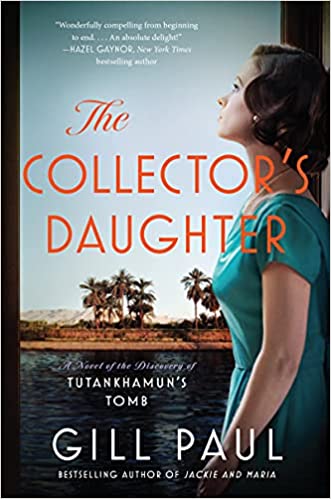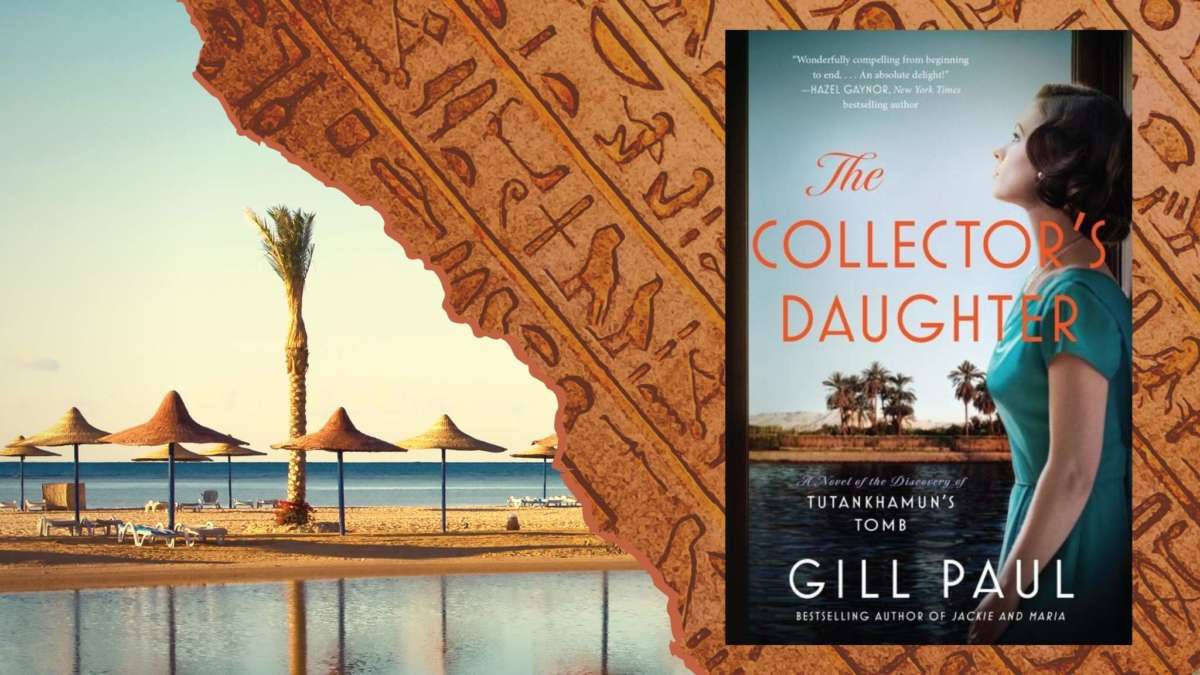The Collector's Daughter by Gill Paul
It was November 4, 1922, and Carter anticipated that his discovery would reveal the long-sought-after and elusive Tutankhamen’s tomb. Three weeks later, Herbert and his daughter, Lady Evelyn, arrived in time to witness the final clearing of yards of sand, dirt and rubble from the stairway leading to the entrance to a previously undiscovered pharaoh’s tomb.
The Collector’s Daughter (William Morrow) is an enthralling new work of historical fiction by Scottish-born London resident and bestselling author Gill Paul. It’s an irresistible gem of well-researched and richly imagined fiction about Lady Evelyn Herbert after her exciting early adventure in the Valley of the Kings.
Following her 1920 season as a debutante and travels in Egypt, the real Lady Evelyn married businessman and future politician Baronet Brograve Beauchamp. Together they lived rich and private lives. However, after a car accident in 1935 which caused a massive head injury, Lady Evelyn periodically suffered from TIAs (transient ischemic attacks) and more damaging strokes until her death at age 78. In the novel, Paul deftly combines Lady Evelyn’s chronic health condition and close association with the discovery of King Tut’s tomb to summon a literary sandstorm of intrigue, mystery, conflict, a little romance and the lingering question of a centuries-old pharaoh’s curse.
AN ORIGINAL TALE STEEPED IN HISTORICAL INTRIGUE
This captivating story begins in a hospital in midsummer, 1972, where our protagonist/narrator, Evelyn, regains consciousness after a massive stroke. She is 71, and her husband sits red-eyed at her bedside, holding her hand. Here, Paul conveys the challenges of Evelyn’s recovery: We participate in her thoughts as she struggles to regain speech and her motor skills. Although she recovers physically, she fails to recognize her own daughter. In this haze, it is easier for Evelyn to recall the exciting days a half-century ago when King Tut’s tomb was discovered and she was a newly-engaged woman. From here, the chapters shift easily and without confusion between past and present.
The drama of the novel heightens with the arrival of Ana Mansour, purportedly a representative of the Egyptian Government and the Department of Antiquities assigned to repatriate objects taken from the tomb of Tutankhamen. She gains access to the frail Lady Evelyn and becomes her confidante. Ana claims to have discovered an exact inventory of the objects found in the tomb from studying the ancient papyrus scrolls which revealed a number of missing items. She is seeking the return of any stolen King Tut-related artifacts that may be at Highclere Castle (the Herbert family’s estate) or in Evelyn’s possession.
GIVING CREDENCE TO THE CURSE
The fictional Evelyn is terrified that the one object she grabbed before exiting the tomb’s inner chamber, an intricate gold container enclosing an unguent, may contain the remnants of poison and carry the pharaoh’s curse. After all, her own father’s death was caused by blood poisoning contracted from an infected mosquito bite, giving credence to the curse: Anyone who disturbs the mummy of an ancient Egyptian will suffer from bad luck, illness or death.
Paul has delivered a fabulous story, well-written and gripping in its history and mystery. Fans of Downton Abbey and readers of books by Lady Fiona Carnarvon, the wife of the present Earl of Carnarvon, will immediately recognize the setting. Viewers of The Crown will be familiar with her nephew, nicknamed “Porchey,” who was a lifelong friend of Queen Elizabeth II and her racing stable manager from 1969 until his death in 2001. The audience for The Collector’s Daughter is huge, and the novel should be a favorite of book clubs.
RELATED POSTS
Jodi Picoult’s Dramatic Dual Narrative Is “Sliding Doors” for the 21st Century
Historical Mystery “Lake of Flowers” Delivers a Feast of Egyptian Intrigue






